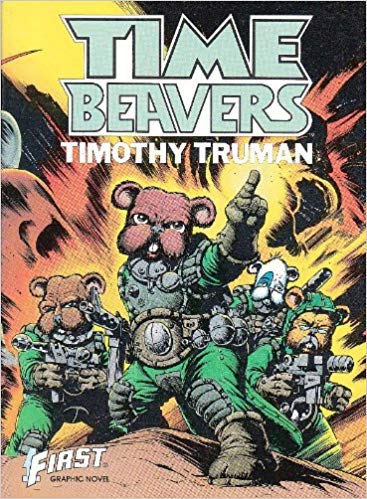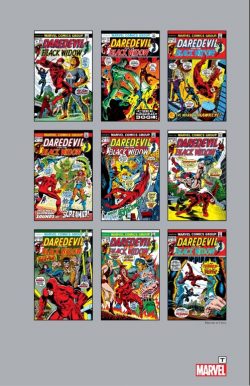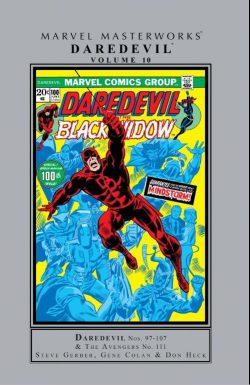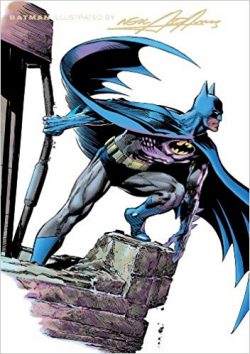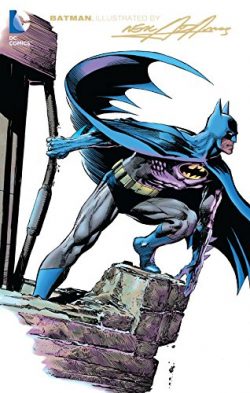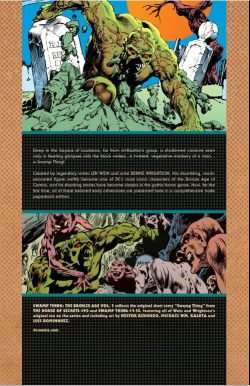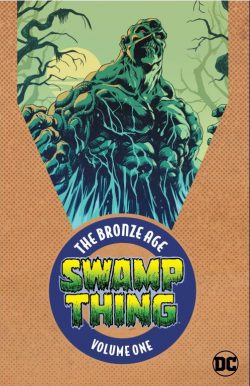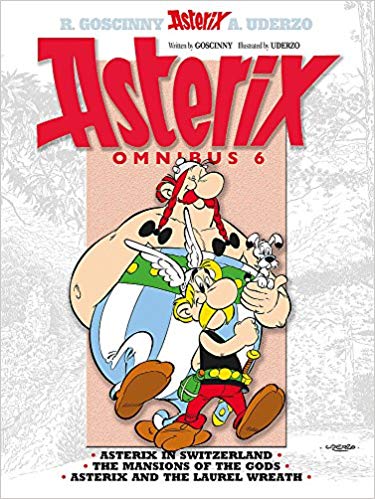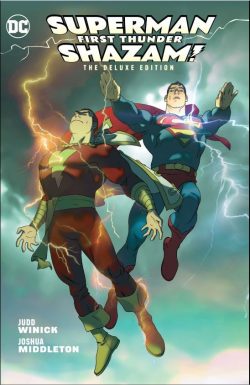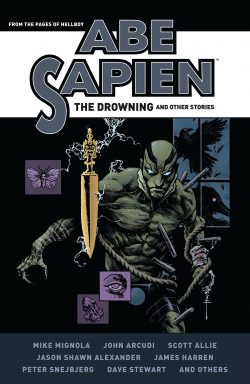

By George Herriman, edited by Bill Blackbeard (Fantagraphics Books
ISBN: 978-1-56097-887-9
In a field positively brimming with magnificent and eternally evergreen achievements, the strip Krazy Kat is – for most cartoon cognoscenti – the pinnacle of pictorial narrative innovation; a singular and hugely influential body of work which shaped the early days of the comics industry and elevated itself to the level of a treasure of world literature.
Krazy and Ignatz, as it is dubbed in these gloriously addictive commemorative tomes from Fantagraphics, is a creation which must be appreciated on its own terms. Over the decades the strip developed a unique language – simultaneously visual and verbal – whilst exploring the immeasurable variety of human experience, foibles and peccadilloes with unfaltering warmth and understanding… and without ever offending anybody. Baffled millions, perhaps, but offended… no.
It did go over the heads and around the hearts of far more than a few, but Krazy Kat was never a strip for dull, slow or unimaginative people: those who simply won’t or can’t appreciate the complex, multi-layered verbal and cartoon whimsy, absurdist philosophy or seamless blending of sardonic slapstick with arcane joshing. It is still the closest thing to pure poesy that narrative art has ever produced.
Herriman was already a successful cartoonist and journalist in 1913 when a cat and mouse who had been noodling about at the edges of his outrageous domestic comedy strip The Dingbat Family/The Family Upstairs graduated to their own feature. Mildly intoxicating and gently scene-stealing, Krazy Kat subsequently debuted in William Randolph Hearst’s New York Evening Journal on Oct 28th 1913 and – largely by dint of the publishing magnate’s enrapt adoration and overpowering direct influence and interference – gradually and inexorably spread throughout his vast stable of papers.
Although Hearst and a host of the period’s artistic and literary intelligentsia (such as Frank Capra, e.e. Cummings, Willem de Kooning, H.L. Mencken and Jack Kerouac) all adored the strip, many local and regional editors did not; taking every potentially career-ending opportunity to drop it from the populace-beguiling comics section.
Eventually the feature found its true home and sanctuary in the Arts and Drama section of Hearst’s papers. Protected there by the publisher’s doctrinaire patronage and enhanced with the cachet of enticing colour, Kat & Ko. flourished unharmed by editorial interference or fleeting fashion, running generally unmolested until Herriman’s death in April 1944.
The saga’s basic premise is simple: Krazy is an effeminate, dreamy, sensitive and romantic feline, hopelessly in love with Ignatz Mouse; a venal everyman, rude, crude, brutal, mendacious and thoroughly scurrilous.
Ignatz is a truly, proudly unreconstructed male and early forerunner of the men’s rights movement: drinking, stealing, fighting, conniving, constantly neglecting his wife and innumerable children and always responding to Krazy’s genteel advances by clobbering the Kat with a well-aimed brick. These he obtains singly or in bulk from noted local brick-maker Kolin Kelly.
Moreover, by the time of these tales it’s not even a response, except perhaps a conditioned one: the mouse spends all his time, energy and ingenuity in heaving missiles at the mild moggy’s bonce. He can’t help himself, and Krazy’s day is bleak and unfulfilled if the hoped-for assault doesn’t happen, but at least in this volume, the brick is supplemented by other projectiles for the sake of variety…
The smitten kitten always misidentifies (or does he?) these gritty gifts as tokens of equally recondite affection showered upon him in the manner of Cupid’s fabled arrows…
The final crucial element completing an anthropomorphic eternal triangle is lawman Offissa Bull Pupp: completely besotted with Krazy, professionally aware of the Mouse’s true nature, yet hamstrung by his own amorous timidity and sense of honour from permanently removing his devilish rival for the foolish feline’s affections. Krazy is, of course, blithely oblivious to the perennially “Friend-Zoned†Pupp’s dolorous dilemma…
Secondarily populating the ever-mutable stage are a stunning supporting cast of inspired bit players such as terrifying deliverer of unplanned babies Joe Stork; unsavoury huckster Don Kiyoti, hobo Bum Bill Bee, social climbing busybody Pauline Parrot, portal-packing Door Mouse, self-aggrandizing Walter Cephus Austridge, inscrutable, barely intelligible Chinese mallard Mock Duck, dozy Joe Turtil and the increasingly ubiquitous sagacious fowl Mrs. Kwakk Wakk, plus a host of other audacious animal crackers all equally capable of stealing the limelight and even supporting their own features.
The exotic, quixotic episodes occur in and around the Painted Desert environs of Coconino (patterned on the artist’s vacation retreat in Coconino County, Arizona) where surreal playfulness and the fluid ambiguity of the flora and landscape are perhaps the most important member of the cast.
The strips themselves are a masterful mélange of unique experimental art, cunningly designed, wildly expressionistic and strongly referencing Navajo art forms whilst graphically utilising sheer unbridled imagination and delightfully evocative lettering and language. This last is particularly effective in these later tales: alliterative, phonetically and even onomatopoeically joyous with a compelling musical force and delicious whimsy (“…stomms an’ momsooms, gales an’ tie fooms…†or “octo pusses an’ pinkwinsâ€).
Yet for all that high-fallutin’ intellectualism, these comic adventures are poetic, satirical, timely, timeless, bittersweet, self-referential, fourth-wall bending, eerily idiosyncratic, astonishingly hilarious escapades encompassing every aspect of humour from painfully punning shaggy dog stories to riotous, violent slapstick. Kids of any age will delight in them as much as any pompous old git like me and you…
Sometimes Herriman even eschewed his mystical mumblings and arcane argots for the simply sublime grace of a supremely entertaining silent gag in the manner of his beloved Keystone Cops…
There’s been a wealth of Krazy Kat collections since the late 1970s when the strip was first rediscovered by a better-educated, open-minded and far more accepting generation. This delirious tome covers all the strips from 1937-1938 in a comfortably hefty (231 x 305 mm) softcover edition – and is also available as a madly mystical digital edition.
Preceded by candid photos, original art and examples of some of Herriman’s personalised gifts and commissions (hand-coloured artworks featuring the cast and settings), the splendid pictorial carnival is bolstered by Jeet Heer’s superb analysis of the unique voice of the strip as cited above. This comes in his erudite Introduction ‘Kat Got Your Tongue: Where George Herriman’s Language Came From‘ after which the jocularity resumes with January 15th 1941 – with the hues provided by professional separators rather than Herriman.
Within this jubilant journal of passions thwarted, the torrid triangular drama plays out as winningly as ever, but with emphasis shifting more to the varied minor cast members. The usual parade of hucksters and conmen return, but the eternally triangular clashes and confusions – although still a constant – are not the satisfying punchlines they used to be, but rather provide a comforting continuity as the world subtly changes and the Second World War begins to slowly shade the strip and affect the characters…
As well as his semi-permanent incarcerations, Ignatz endures numerous forms of exile and social confinement, but with Krazy aiding and abetting, these sanctions seldom result in a reduction of cerebral contusions and the plague of travelling conjurors, unemployed magicians and shady clairvoyants still make life hard for the hard-pressed constabulary and the gullible fools they target…
As always, the mouse’s continual search for his ammunition of choice leads to many brick-based acquisition and delivery gags but has widened his scope to encompass munition of materials other than clay and shapes more aerodynamic and enticing than bulky rectangles. Perhaps because of Herriman’s own vintage, many characters share a greater appreciation of infirmity and loss of focus, reflected in the reduction of Krazy to a bit player in many of the strips.
Pupp suffers from double vision on occasion and repeatedly tests labour-saving new policing appliances – such as stilts and periscopes – while Colin Kelly moves away from artisanal brick-baking to conveyor-belt mass production. Ignatz tries to bolster his fading energies through unlikely herbal additives – such as spinach – and the entire township (including buildings) suffer protracted bouts of polka-dottedness after the arrival of a dalmatian “koach kanineâ€. Joe Stork starts using robot planes to deliver his dread bundles of natal joy and responsibility, Ignatz’s much abused wife Magnesia starts her long-delayed resistance and emancipation, and everybody in town can’t seem to get enough sleep…
The ever-changing skies remain a source of wonder and bewilderment with oddly-shaped stellar phenomena abounding, and the Prof from Coconino’s Museum of Palaeontology, Archaeology and Such unearths primeval precursors to our cartoon cast, while modern times are acknowledged through myriad permutations and adaptations to Ignatz’s home-from-home the county jail.
Aged busybody Mrs Kwakk Wakk expands her role of wise old crone and sarcastic Greek Chorus; upping her status from bit-player to full-on supporting cast. She has a mean and spiteful beak on her too, whilst laconic vagabond Bum Bill Bee shares his regal origins (a whole bunch of them, in fact) with the hoi polloi in town…
The town barber stokes the flames of passion and reshapes the grizzled heads of many ardent swains seeking to curry the favours of vivacious, exotic new schoolteacher Miss Mimi who is, as everybody is painfully aware, French…
A different form of double vision taxes the Kat’s composure in doses of mirror madness and episodes of powdered katnip overindulgence offer a nosy edge of conspiracy to proceedings, but doesn’t too much curtail Krazy’s efforts in horticulture, nourishing korn and other useful vegetable crops…
The tone of the strips subtly changes from October 1941 with the introduction of Pupp’s mechanised Listening Post. Spying was always a major interest for all citizens, as was stargazing and gossip. Now however, with war clouds forming in the real world, an edge of gloomy but absurdist satire could be detected in many strips, such as when Kelly cuts off the mouse’s brick supply due to clay – like paper, rubber and gasoline – being officially afforded new status as a Military Priority Material…
There’s a marked increasing in winking around town, although those in the know codify the practice as “nictating†and some citizens – such as the pelicans and Mr. Kenga Roo – are subjected to increased stop-&-search indignities too: what with them being born to conceal bricks and brick-tossers…
At least, the traditional fishing, water sports, driving and parlous and participatory state of the burgeoning local theatre scene remain hot topics too…
And, welcomingly as ever, there is still a solid dependence on the strange landscapes and eccentric flora (including a mass ingress of elephants, snakes and worms) for humorous inspiration, while all manner of weather and terrain play a large part in inducing anxiety, bewilderment and hilarity.
This penultimate collection is again supplied with an erudite and instructional ‘Ignatz Mouse Debaffler Page’, providing pertinent facts, snippets of contextual history and necessary notes for the young and potentially perplexed.
Herriman’s epochal classic is a stupendous and joyous monument to gleeful whimsy: in all the arenas of Art and Literature there has never been anything like these strips which have inspired comics creators and auteurs in fields as disparate as prose fiction, film, dance, animation and music, whilst fulfilling its basic function: engendering delight and delectation in generations of wonder-starved fans.
If, however, you are one of Them and not Us, or if you actually haven’t experienced the gleeful graphic assault on the sensorium, mental equilibrium and emotional lexicon carefully thrown together by George Herriman from the dawn of the 20th century until the dog days of World War II, this astounding compendium is a most accessible way to do so.
© 2008, 2015 Fantagraphics Books. All rights reserved.
